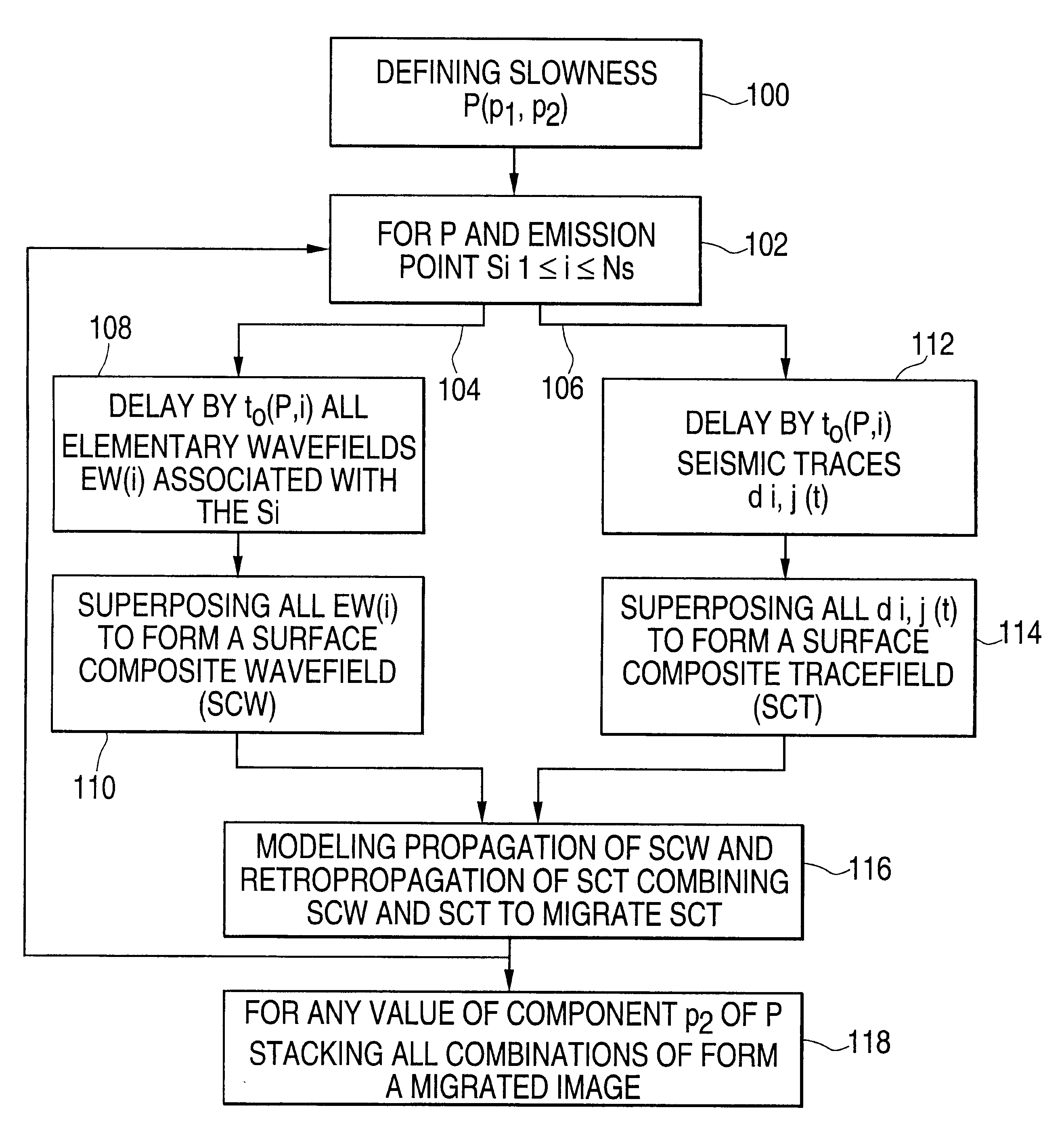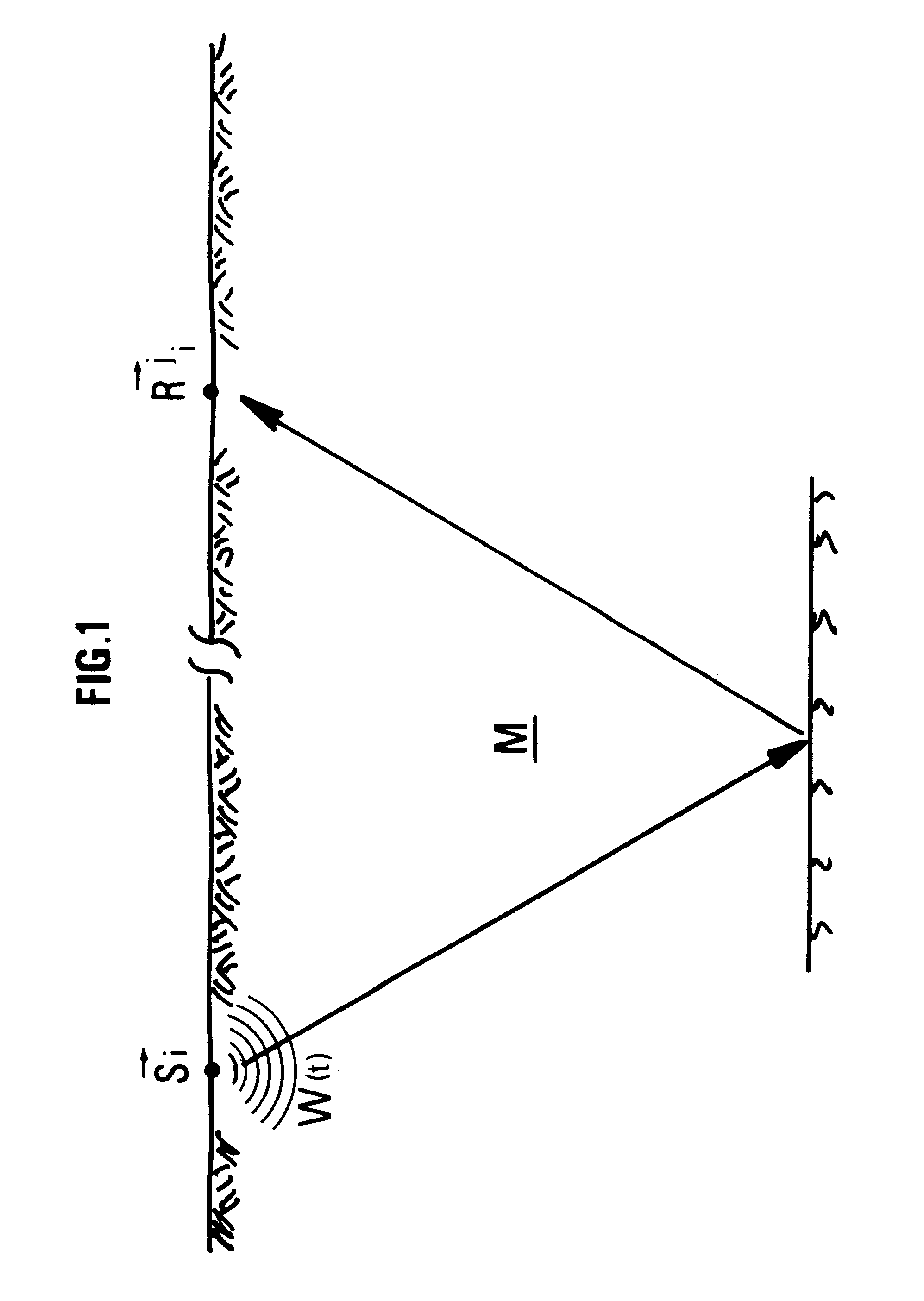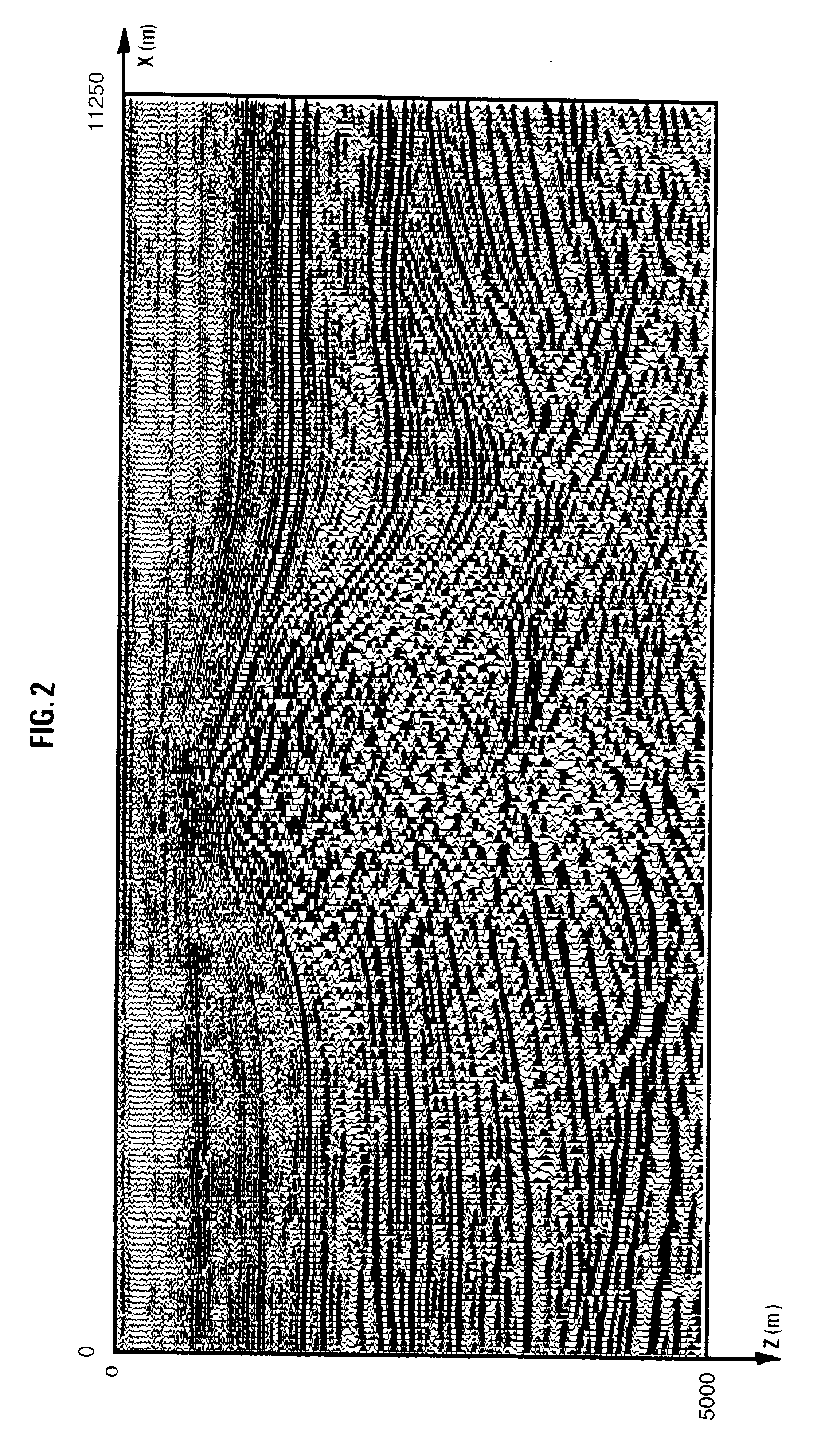3D prestack seismic data migration method
a technology of prestack seismic data and migration method, which is applied in the direction of instruments, measurement devices, scientific instruments, etc., can solve the problems of reducing the calculation time required by a factor of several tens, complicated arrival time calculation, and general cost of calculation tim
- Summary
- Abstract
- Description
- Claims
- Application Information
AI Technical Summary
Problems solved by technology
Method used
Image
Examples
Embodiment Construction
Definitions, Notations and Hypotheses Required
The method according to the invention performs migration of seismic data for imaging an underground zone M, the seismic data being obtained after a series of N.sub.s seismic cycles, each one (FIG. 1) comprising emission of a seismic signal W(t) from a point of emission S.sub.i with 1.ltoreq.i.ltoreq.N.sub.s, reception, by seismic receivers placed in positions R.sup.j.sub.i, of the seismic signals reflected by the zone discontinuities and recording of the various signals received by each seismic receiver as a seismic trace d.sup.j.sub.i (t). It is assumed that each seismic source emits the same signal W(t), since such a situation can always be obtained by suitable preprocessing of the data such as deconvolution.
The term profile refers to a set of aligned points of emission and it is assumed that all the signal acquisitions are performed using parallel emission profiles. It is assumed that, for each source, the receivers are located on the...
PUM
 Login to View More
Login to View More Abstract
Description
Claims
Application Information
 Login to View More
Login to View More - R&D
- Intellectual Property
- Life Sciences
- Materials
- Tech Scout
- Unparalleled Data Quality
- Higher Quality Content
- 60% Fewer Hallucinations
Browse by: Latest US Patents, China's latest patents, Technical Efficacy Thesaurus, Application Domain, Technology Topic, Popular Technical Reports.
© 2025 PatSnap. All rights reserved.Legal|Privacy policy|Modern Slavery Act Transparency Statement|Sitemap|About US| Contact US: help@patsnap.com



